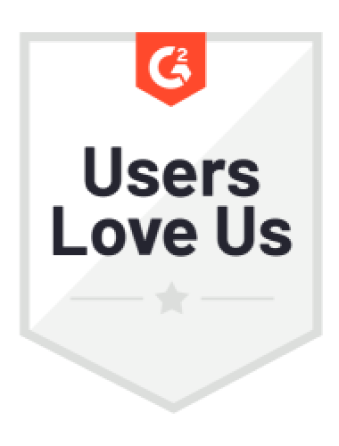Decoding Analytics in Life Sciences: Data-Driven Approaches for Biotech and Healthcare
Discover the power of data-driven approaches in biotech and healthcare with our in-depth analysis of analytics in life sciences.
In the age of information, data has become a valuable asset in almost every field. The life sciences, which encompass biotechnology and healthcare, are no exception. The emergence of analytics has revolutionized how these industries operate, paving the way for data-driven approaches that have the potential to transform research, development, and patient care. In this article, we will explore the role of analytics in life sciences, the evolution of data-driven approaches, key components of analytics, challenges in implementation, and the benefits of embracing this new paradigm.
Understanding the Role of Analytics in Life Sciences
The intersection of data and life sciences has opened up endless possibilities. Analytics, in this context, refers to the use of statistical methods and computational algorithms to extract meaningful insights from vast amounts of data. By harnessing the power of analytics, biotech and healthcare professionals can unlock hidden patterns, uncover correlations, and make data-driven decisions that have a profound impact.
Moreover, the field of analytics in life sciences is not limited to just genomics and proteomics. It also encompasses areas such as metabolomics, transcriptomics, and microbiomics, each providing unique sets of data that can be analyzed to gain a deeper understanding of biological systems. For instance, metabolomics focuses on the study of small molecules present in biological samples, offering insights into metabolic pathways and disease mechanisms.
The Intersection of Data and Life Sciences
The marriage of data and life sciences has resulted in a paradigm shift in research and development. With the advent of genomics and proteomics, immense amounts of genetic and molecular data are being generated. Analytics allows scientists to make sense of this vast amount of information, enabling them to understand disease pathways, identify therapeutic targets, and personalize treatment plans.
Furthermore, the integration of multi-omics data, which combines information from genomics, proteomics, metabolomics, and other omics fields, has become increasingly prevalent. This holistic approach provides a comprehensive view of biological systems, offering a more nuanced understanding of health and disease. By analyzing these diverse datasets collectively, researchers can uncover intricate relationships and mechanisms that would have otherwise remained hidden.
The Impact of Analytics on Biotech and Healthcare
Analytics has made tremendous strides in biotech and healthcare. It has catalyzed drug discovery, allowing researchers to identify novel drug candidates, predict their efficacy, and optimize dosing regimens. In healthcare, analytics has transformed patient care by enabling early detection of diseases, predicting patient outcomes, and optimizing treatment plans. By leveraging analytics, biotech and healthcare professionals can achieve breakthroughs that were previously unimaginable.
Moreover, the application of machine learning and artificial intelligence in analytics has further revolutionized the field. These advanced technologies can sift through massive datasets at incredible speeds, identifying complex patterns and trends that human analysts may overlook. By incorporating machine learning algorithms, researchers can enhance the accuracy of predictions, streamline drug development processes, and ultimately improve patient outcomes.
The Evolution of Data-Driven Approaches in Life Sciences
The use of data-driven approaches in life sciences is not a recent phenomenon. However, the widespread adoption of analytics has accelerated the shift towards data-driven decision making.
One of the key drivers behind the evolution of data-driven approaches in life sciences is the exponential growth of data sources. With the advent of high-throughput technologies such as next-generation sequencing and high-resolution imaging, researchers are generating vast amounts of data at an unprecedented rate. This influx of data presents both challenges and opportunities, as scientists strive to extract meaningful insights from complex datasets to drive scientific discovery and innovation.
The Shift Towards Data-Driven Decision Making
Gone are the days when decisions were solely based on intuition or limited data. With the availability of large datasets and sophisticated algorithms, data-driven decision making has become the norm. From conducting preclinical studies to designing clinical trials, analytics plays a pivotal role in optimizing resources, reducing costs, and increasing success rates.
Moreover, the integration of data-driven approaches in life sciences has led to a paradigm shift in research methodologies. Traditional hypothesis-driven research is being complemented by data-driven exploratory analyses, enabling researchers to uncover hidden patterns, correlations, and associations that may have been overlooked using conventional approaches. This data-centric approach not only enhances the efficiency and reproducibility of research but also fosters interdisciplinary collaborations and knowledge sharing within the scientific community.
The Future of Analytics in Biotech and Healthcare
As the field of analytics continues to evolve, its impact on biotech and healthcare is poised to expand further. With advancements in artificial intelligence and machine learning, analytics models are becoming more sophisticated, allowing for the integration of diverse datasets and the discovery of novel insights. The future holds exciting possibilities, including the development of precision medicine, where treatments are tailored to individual patients based on their unique genetic makeup and health profiles.
Furthermore, the application of data-driven approaches in healthcare is revolutionizing patient care and clinical decision making. From predictive analytics for disease diagnosis and prognosis to personalized treatment recommendations based on patient-specific data, data-driven insights are empowering healthcare providers to deliver more precise, efficient, and personalized care to patients. The integration of real-time data streams from wearable devices, electronic health records, and genomic databases is paving the way for a new era of proactive and preventive healthcare, where early intervention and personalized interventions are key pillars of modern healthcare delivery.
Key Components of Analytics in Life Sciences
To effectively leverage analytics in the life sciences, several key components must be considered: data collection and management in biotech, analytical tools and techniques in healthcare, and the role of data visualization in scientific discovery.
Data Collection and Management in Biotech
Biotech companies generate enormous amounts of data throughout the drug discovery and development process. Collecting, organizing, and managing this data is crucial to ensure its integrity and accessibility. Robust data management systems, coupled with advanced analytics platforms, enable researchers to effectively analyze data, identify patterns, and derive actionable insights. Additionally, the implementation of blockchain technology in data management is gaining traction in the biotech industry, offering enhanced security and transparency in handling sensitive information.
Furthermore, the integration of artificial intelligence (AI) and machine learning algorithms in data collection and management processes is revolutionizing how biotech companies handle and analyze complex datasets. These technologies can automate data processing, identify trends, and even suggest potential research directions based on existing data, accelerating the pace of innovation in the life sciences.
Analytical Tools and Techniques in Healthcare
In healthcare, the availability of analytical tools and techniques has expanded exponentially. From electronic health records to wearable devices, healthcare professionals now have access to vast amounts of patient data. Advanced analytics platforms can analyze this data in real-time, enabling early detection of diseases, predicting patient outcomes, and optimizing treatment plans. The use of predictive modeling, natural language processing, and image analysis techniques further enhance the analytical capabilities in healthcare.
Moreover, the emergence of precision medicine has led to a personalized approach to healthcare, where analytics play a crucial role in tailoring treatments to individual patients based on their genetic makeup, lifestyle factors, and environmental influences. This shift towards precision medicine not only improves patient outcomes but also reduces healthcare costs by avoiding unnecessary treatments and interventions.
Challenges and Solutions in Implementing Analytics in Life Sciences
While the potential of analytics in life sciences is tremendous, implementing these approaches poses unique challenges that need to be addressed.
Overcoming Data Privacy and Security Concerns
The sensitive nature of healthcare data necessitates robust measures to ensure privacy and security. Compliance with regulatory requirements, such as HIPAA, GDPR, and data anonymization techniques, is crucial to protect patient confidentiality. Adopting encryption protocols, access controls, and continuous monitoring systems can mitigate risks and instill confidence in stakeholders.
Addressing the Skills Gap in Data Analysis
Analytics is a specialized field that requires a skilled workforce. However, there is a shortage of professionals with the necessary expertise in both life sciences and analytics. Companies and educational institutions must collaborate to develop training programs that bridge this gap. Continuous professional development and upskilling initiatives are essential to ensure a competent workforce capable of harnessing the power of analytics effectively.
The Benefits of Embracing Analytics in Life Sciences
The potential benefits of embracing analytics in life sciences are extensive and far-reaching.
Enhancing Research and Development through Data
By leveraging analytics, researchers can accelerate the drug discovery process, identify new therapeutic targets, and optimize clinical trials. Data-driven approaches enable efficient resource allocation, cost reduction, and increased success rates, ultimately leading to the development of safer and more effective treatments.
Improving Patient Care with Analytics
Analytics empowers healthcare providers to deliver personalized care tailored to the unique needs of each patient. Early detection of diseases, predictive analytics for patient outcomes, and optimized treatment plans improve patient satisfaction, enhance clinical outcomes, and drive down healthcare costs. Through analytics, healthcare can evolve from a reactive model to a proactive and preventative one.
Conclusion
In the dynamic world of life sciences, analytics holds immense potential. Harnessing the power of data-driven approaches can revolutionize biotech and healthcare, impacting everything from drug discovery to patient care. As the field continues to evolve, understanding the role of analytics, addressing challenges, and embracing its benefits are imperative for industry professionals seeking to stay at the forefront of innovation and drive positive change in this critical domain.
As you seek to harness the transformative power of analytics in the life sciences, CastorDoc stands ready to be your most reliable AI Agent for Analytics. Embrace the future with a platform designed to empower your business teams with trustworthy, instantaneous data answers, enabling you to tackle the most strategic challenges with confidence. With CastorDoc, you can unlock the full potential of self-service analytics, enhance data literacy, and maximize the ROI of your data stack. Experience the autonomy and trust that comes with informed decision-making, and lighten the load on your data teams and analysts. Try CastorDoc today and take the first step towards truly activating your data's value in the ever-evolving domain of biotech and healthcare.
You might also like
Get in Touch to Learn More



“[I like] The easy to use interface and the speed of finding the relevant assets that you're looking for in your database. I also really enjoy the score given to each table, [which] lets you prioritize the results of your queries by how often certain data is used.” - Michal P., Head of Data




.png)
%202.png)

%202.png)

%202.png)
%202.png)
%202.png)

%202.png)


%202.png)

%202.png)


.png)

